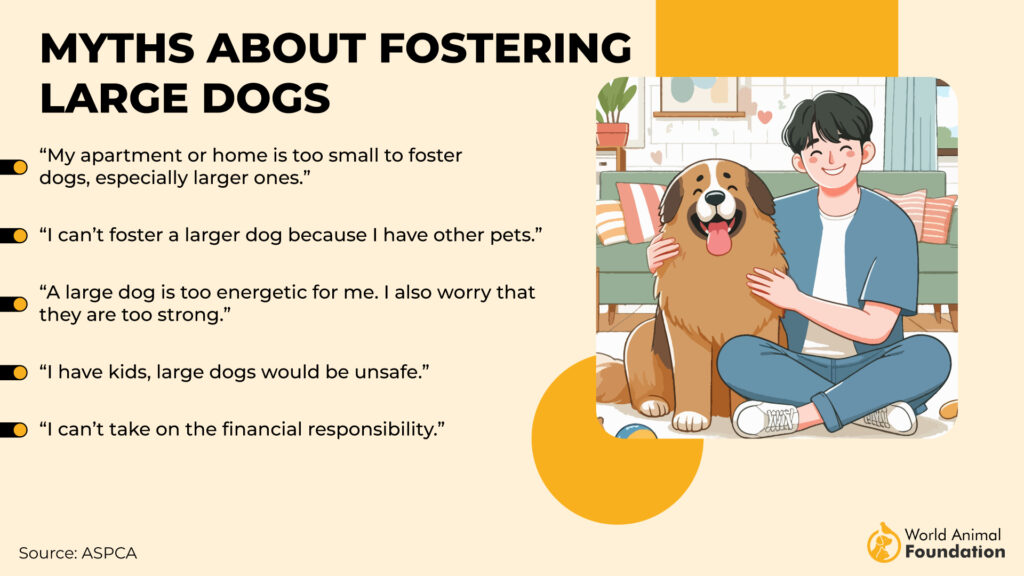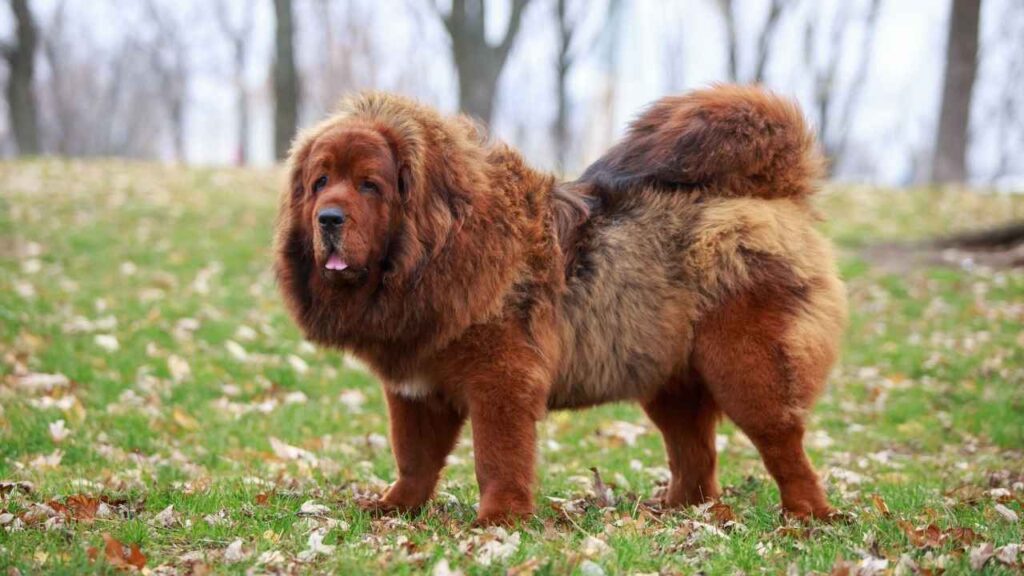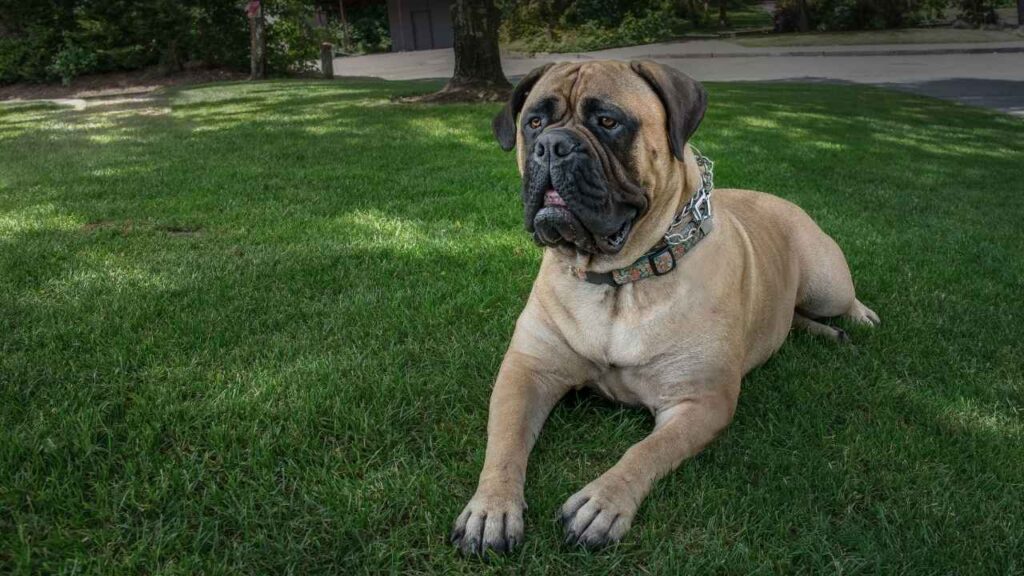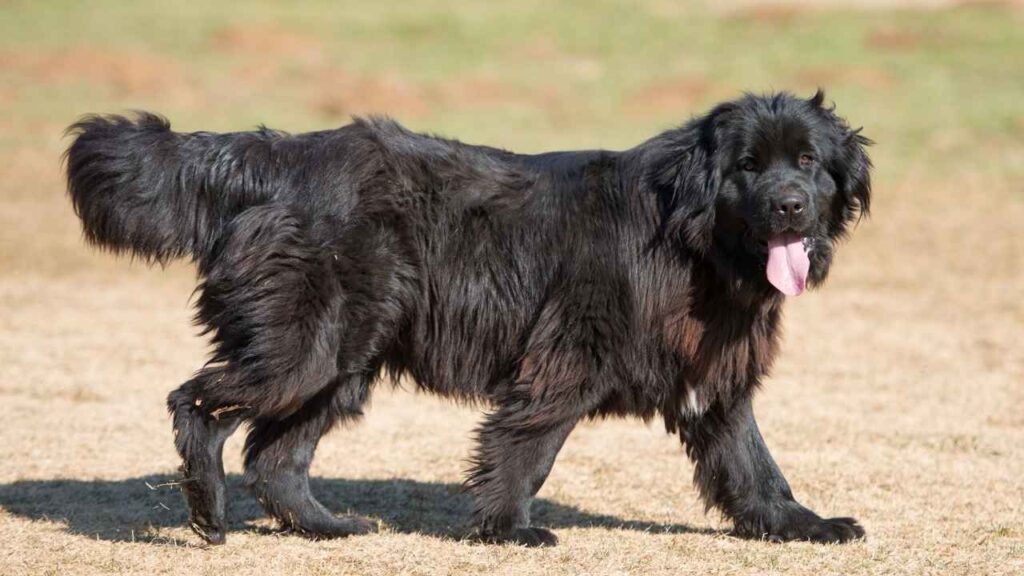When choosing a canine companion, large dog breeds often stand out for their remarkable presence, unwavering loyalty, and versatile capabilities. These majestic breeds offer not only companionship but also protection, service, and adventure. Whether you’re seeking a gentle giant to love your family or an energetic playmate for active outings, large dogs embody a unique blend of strength and tenderness. In exploring the 9 best large dog breeds, we’ll uncover the distinctive traits and charms that make each breed a beloved choice, guiding you to find the perfect furry friend to fit your lifestyle and heart.
Large dog breeds aren’t just big fluffballs; they’re like living, breathing teddy bears with a knack for making life feel extra special. Seriously, once you’ve been hugged by one of these gentle giants, there’s no going back. Let me tell you why they’re the ultimate furry companions!
First off, they’re the ultimate guardians of your heart and your home. Their sheer size and that deep, booming bark? Enough to make anyone think twice before stepping foot uninvited. Their devotion is next-level; they’re not just pets—they’re family!
Oh, and let’s not forget their superstar talents! From helping out in search-and-rescue missions to offering support as service animals, they’re like superheroes with wagging tails. It’s honestly humbling to see how much heart they put into everything they do!
Now, don’t let their size intimidate you. Beneath that big exterior is a softie who’s great with kids, other pets, and pretty much anyone who’s up for some slobbery kisses.
So, if you’re ready to welcome a bundle of oversized love and adventure into your life, a large dog breed might just be your perfect match. Here are our top nine picks!
9 Largest Dog Breeds You Need to Know
1. Tibetan Mastiff
| Height | Minimum 26 inches (male), minimum 24 inches (female) |
| Weight | 90-150 pounds (male), 70-120 pounds (female) |
| Life Expectancy | 10-12 years |
Tibetan Mastiffs are famous for their impressive size and lion-like looks. Hailing from the mountains of Tibet, they are one of the world’s most ancient and majestic breeds. This Mastiff is a stunning and protective breed with an impressive coat and an air of nobility.
They’re deeply loving and loyal to their family but are best suited for experienced dog owners. Independent by nature, they’re not the type to follow every command, making them less ideal for obedience or agility competitions.
Tibetan Mastiffs may be laid-back and nap during the day, but they tend to be more active at night. Generally quiet, they’ll quickly sound the alarm with a bark if something doesn’t feel right to them.
According to PetMD, if you’re considering a Tibetan Mastiff, keep in mind their strong-willed personality, their reserved demeanor with strangers, the need for plenty of space to roam, the critical importance of early socialization, the high costs of feeding and healthcare, and the possibility of health issues down the line.
2. Bullmastiff
| Height | 25-27 inches (male), 24-26 inches (female) |
| Weight | 110-130 pounds (male), 100-120 pounds (female) |
| Life Expectancy | 7-9 years |
Bullmastiffs were originally bred in England as fearless protectors for gamekeepers, and their strong, imposing appearance still serves as a natural deterrent to intruders.
Their short coat is easy to maintain and sheds minimally, though it comes with plenty of drool. Daily walks and playtime are enough to keep them happy, making them surprisingly well-suited for apartment living as long as they get regular outings. Despite their mellow demeanor, Bullmastiffs can shine in dog sports and even make wonderful therapy dogs with their calm and charming personalities.
Hill’s Pet notes that training requires a firm yet fair approach, as Bullmastiffs are independent thinkers. Early socialization is essential to nurture their protective instincts in a positive way. These dogs thrive on human connection and should primarily live indoors to build a close bond with their families.
While their strength and size demand responsible ownership, a well-trained Bullmastiff is a loyal, loving, and courageous companion—your ultimate best friend and steadfast guardian.
3. Leonberger
| Height | 28-31.5 inches (male), 25.5-29.5 inches (female) |
| Weight | 110-170 pounds (male), 90-140 pounds (female) |
| Life Expectancy | 7 years |
Originating in Germany, the Leonberger is a giant breed developed from a mix of Newfoundlands, longhaired Saint Bernards, and Great Pyrenees. These majestic dogs come with a big personality, a love for mischief, and a lot of fur—so they’re not the best fit for neat freaks. Their long coat sheds heavily, and their playful nature means a bit of mess is inevitable.
Early and consistent training, combined with extensive socialization, is a must for this breed. With positive reinforcement, a Leonberger can become an irreplaceable family companion. They thrive on human interaction and won’t be happy spending their days isolated in the backyard.
Leos need about an hour of exercise daily to keep them healthy and content. Due to their massive size, they’re not ideal for homes with very young children, as supervision is essential.
On the bright side, their deep bark and imposing presence make them excellent guard dogs for potential intruders. This breed is all about big love and big responsibility!
4. Newfoundland
| Height | 28 inches (average male), 26 inches (average female) |
| Weight | 130-150 pounds (male), 100-120 pounds (female) |
| Life Expectancy | 9-10 years |
The Newfoundland is a lovable giant, known for its gentle demeanor and natural affinity for children. Made famous by the fictional nanny dog Nana in Peter Pan, this breed’s affectionate and protective instincts toward kids are anything but make-believe.
Hailing from Newfoundland, Canada—like their popular cousin, the Labrador Retriever—Newfoundlands are intelligent, eager to please, and hardworking. They’re versatile, friendly, and adaptable, making them fantastic family companions.
With exceptional trainability and quick learning, early training is essential to manage their size as they grow into their impressive 100+ pounds. Thankfully, these dogs aren’t overly energetic and are perfectly content relaxing on the couch.
True water lovers, AKC points out that Newfoundlands are powerful swimmers with a natural instinct for rescue. Their heroic history is full of tales of bravery, from saving people during shipwrecks to pulling children from icy waters.
5. Boerboel
| Height | 24-27 inches (male), 22-25 inches (female) |
| Weight | 150-200 pounds |
| Life Expectancy | 9-11 years |
Boerboels are one of the biggest dog breeds in the world. They are powerhouses of strength and loyalty, deeply devoted to their families and homes. Originally bred by Dutch settlers in South Africa, these formidable dogs protected homesteads from predators like hyenas, lions, and leopards.
Today, they’re renowned as vigilant watchdogs, impressive competitors in canine sports, and fiercely protective family companions who are especially gentle with children.
However, Boerboels’ territorial nature means they require consistent training and early socialization to prevent aggression toward strangers or other dogs.
They thrive in homes that can meet their space and exercise needs and with owners who are confident and patient. Boerboels are generally robust and healthy, but like many large breeds, they can be prone to certain health issues, including hip dysplasia, elbow dysplasia, and heart disease. Regular vet check-ups and a healthy lifestyle are key to keeping them in top shape.
6. Mastiff
| Height | 30 inches & up (male), 27.5 inches & up (female) |
| Weight | 160-230 pounds (male), 120-170 pounds (female) |
| Life Expectancy | 6-10 years |
The word “massive” perfectly captures the essence of the Mastiff. While other breeds might rival their height, none can match their sheer weight—earning them the title of the largest dog breed in the world. In fact, Guinness World Records recognizes an Old English Mastiff named Aicama Zorba as the longest and heaviest dog ever recorded, tipping the scales like no other.
Though their history includes roles as fighters against lions, today’s Mastiffs are gentle giants with a soft spot for kids. However, their size means they can accidentally knock over little ones, so supervision is a must.
Surprisingly adaptable, they’re content in environments ranging from city condos to sprawling country homes, provided they get enough exercise. And if you think they’re outdoor dogs, think again—Mastiffs love nothing more than being close to their family, even if it means squishing themselves into lap-dog territory or doubling as a cozy footrest.
That incredible size, however, comes with a trade-off: a shorter lifespan than smaller breeds. This is an important consideration for anyone thinking of welcoming one of these affectionate giants into their home.
7. Anatolian Shepherd
| Height | 29 inches (male), 27 inches (female) |
| Weight | 110-150 pounds (male), 80-120 pounds (female) |
| Life Expectancy | 11-13 years |
The Anatolian Shepherd Dog is a natural protector, bred for centuries to guard livestock and make independent decisions about threats to their territory. From a young age, they bond deeply with their “flock,” whether it’s a herd of sheep or a human family, and take their guardian role seriously. Their protective instincts are matched by an imposing presence, making them highly effective watchdogs.
Despite their independent nature, Anatolians are trainable—though they often weigh the pros and cons of following commands. A strong, kind, and consistent owner is essential to guide them as a leader.
They thrive with plenty of exercise, needing 60-90 minutes daily to keep both their minds and bodies in shape. And don’t forget—they love to dig! Providing a safe spot for this behavior will save your yard.
Their grooming needs are straightforward: their thick double coat requires regular brushing to prevent mats, and baths are needed occasionally to keep them clean.
8. Neapolitan Mastiff
| Height | 26-31 inches (male), 24-29 inches (female) |
| Weight | 150 pounds (male), 110 pounds (female) |
| Life Expectancy | 7-9 years |
The Neapolitan Mastiff, or “Neo” to its fans, was originally bred in southern Italy as both a family companion and a guard dog. Today, this massive breed is known as a true gentle giant.
With their imposing presence and an intimidating stare reserved for strangers, they’re natural protectors, but they’re far from being aggressive without reason. Loyal and steady, their main priority is being close to their loved ones, ready to defend if the situation demands it.
Despite their mellow demeanor indoors, Neos need space to stretch out. Apartment living can be a challenge unless there’s room for them to sprawl comfortably—otherwise, your furniture may be rearranged or objects toppled as they settle in.
For older kids, the Neo can become the ultimate cozy backrest during homework or movie nights, blending their protective instincts with an endearing warmth.
9. Tosa
| Height | Minimum 21.5-23.5 inches |
| Weight | 100-200 pounds |
| Life Expectancy | 10-12 years |
The Tosa Inu, often called simply the Tosa, is a powerful Japanese breed with a fascinating history. Developed in the late 19th century by crossing native Japanese dogs with Western breeds like the Mastiff, Bulldog, and German Pointer, the Tosa was originally bred for dog fighting. Today, they are valued for far more than their impressive strength.
Tosas are known for their quiet, dignified, and brave nature, as well as their strong sense of loyalty and protection. While they are obedient and sensitive, this sensitivity means they can become reactive without proper socialization and positive reinforcement training.
Tosas need experienced owners who understand their distinct needs and characteristics. Intelligent and responsive to training, they thrive when clear boundaries are set early and leadership is established within the household.
Early socialization is essential to ensure they adapt well to new environments, people, and situations, making them balanced and confident companions.
Key Considerations for Large Dog Ownership
Adopting a large dog comes with unique responsibilities that require careful consideration:
Exercise Needs
One of the most important factors is ensuring you can provide them with an active lifestyle. Regular exercise isn’t just about keeping them fit—it’s key to toning their muscles, boosting metabolism, keeping their minds sharp, promoting good behavior, and improving socialization.
As a general rule, dogs need 30 minutes to 2 hours of exercise daily, and larger breeds often fall on the higher end of that spectrum. With their typically high energy levels, they thrive on regular physical activity and mental stimulation to stay happy and avoid boredom-related behavioral issues.
Training Concerns
AKC highlights that training a giant dog is essential and should start early, and continue throughout their life. When your dog weighs as much as an adult, good manners aren’t optional—they’re a must for safety. Behaviors like jumping, which might be harmless in smaller dogs, can be serious issues with a giant breed.
Giant dogs require daily training and consistent reinforcement to ensure they’re well-behaved. Despite their size, they’re often sensitive, so training should always be fun, positive, and reward-based to build trust and cooperation.
Vet Bills
Vet bills for large dogs can be significantly higher, so potential owners should be prepared for the added expense. From food to boarding and medical care, costs tend to increase with size. Procedures, surgeries, and medications are often pricier for large breeds due to their greater size and unique medical needs.
Health Concerns
Large dogs are prone to certain health problems, including:
- Entropion: Inward-turned eyelids causing irritation; may need surgery.
- Dysplasia: Misaligned hip/elbow joints causing pain; managed with weight control, supplements, or surgery.
- Bloat: Twisted stomach requiring emergency surgery; symptoms include a swollen belly and restlessness.
- Arthritis: Joint wear causing stiffness; treated with meds and weight management.
- Cardiomyopathy: Enlarged heart leading to fatigue and breathing issues; managed with medication.
Conclusion
Owning the largest dogs comes with unique rewards and challenges. Whether it’s the tallest breed like Great Danes or a rugged mountain dog from the Swiss Alps, these breeds are as diverse as they are impressive. Many thrive with country living, daily exercise, and tasks like guarding livestock or participating in activities that showcase their versatility.
While some, like terriers, bring an adorable yet vocal personality, others may demand patience due to their stubborn streaks or independent thinking.
These dogs are smart and capable of hard work, but their size and care can be expensive and require experienced owners who can handle their strength and needs. Whether you prefer an AKC purebred gentle giant or a mixed breed, owning a large dog is a big commitment, but the love and companionship they provide make it all worthwhile.
In conclusion, the “9 Best Large Dog Breeds” showcases a diverse array of canine companions, each offering unique traits and characteristics. These breeds, from the gentle giants like the Great Dane to the loyal and protective German Shepherd, cater to various lifestyles and preferences. While large dogs require ample space and exercise, they often provide unparalleled companionship, loyalty, and affection. Whether a family pet, a dedicated working breed, or a loving guardian, each of these large dog breeds brings something special to the table, making them cherished members of many households worldwide.












